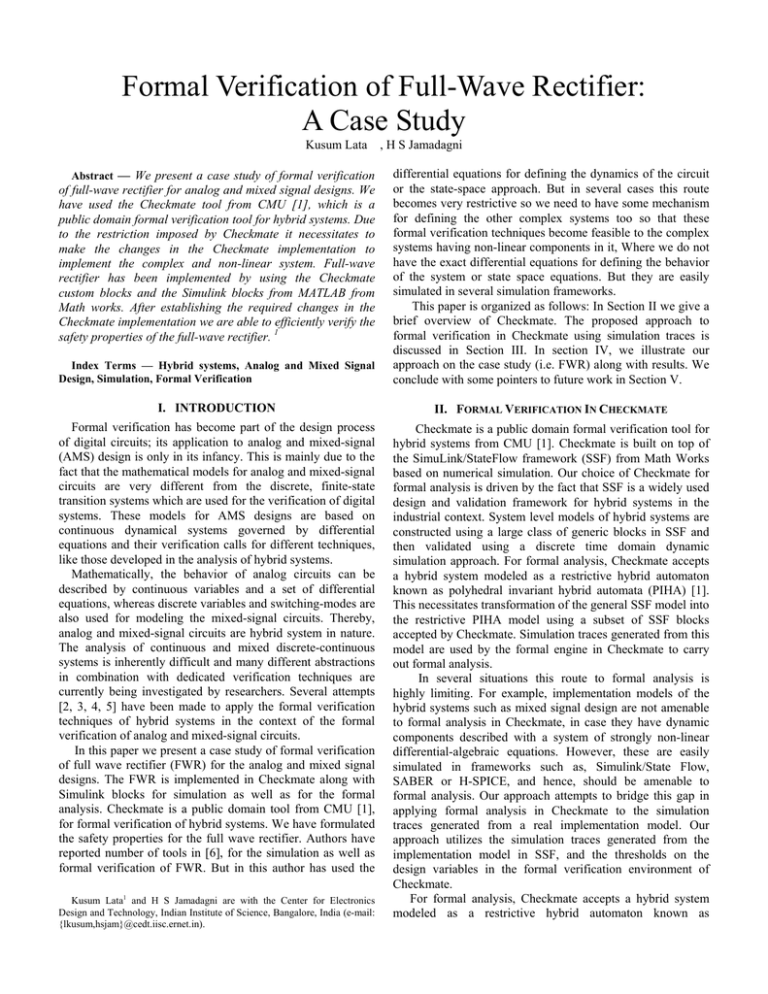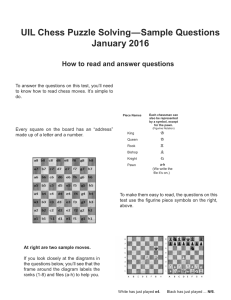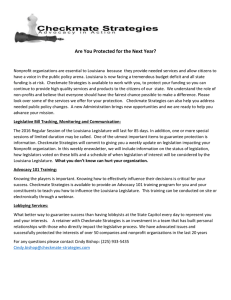Formal Verification of Full-Wave Rectifier: A Case Study
advertisement

Formal Verification of Full-Wave Rectifier:
A Case Study
Kusum Lata , H S Jamadagni
Index Terms — Hybrid systems, Analog and Mixed Signal
Design, Simulation, Formal Verification
differential equations for defining the dynamics of the circuit
or the state-space approach. But in several cases this route
becomes very restrictive so we need to have some mechanism
for defining the other complex systems too so that these
formal verification techniques become feasible to the complex
systems having non-linear components in it, Where we do not
have the exact differential equations for defining the behavior
of the system or state space equations. But they are easily
simulated in several simulation frameworks.
This paper is organized as follows: In Section II we give a
brief overview of Checkmate. The proposed approach to
formal verification in Checkmate using simulation traces is
discussed in Section III. In section IV, we illustrate our
approach on the case study (i.e. FWR) along with results. We
conclude with some pointers to future work in Section V.
I. INTRODUCTION
II. FORMAL VERIFICATION IN CHECKMATE
Formal verification has become part of the design process
of digital circuits; its application to analog and mixed-signal
(AMS) design is only in its infancy. This is mainly due to the
fact that the mathematical models for analog and mixed-signal
circuits are very different from the discrete, finite-state
transition systems which are used for the verification of digital
systems. These models for AMS designs are based on
continuous dynamical systems governed by differential
equations and their verification calls for different techniques,
like those developed in the analysis of hybrid systems.
Mathematically, the behavior of analog circuits can be
described by continuous variables and a set of differential
equations, whereas discrete variables and switching-modes are
also used for modeling the mixed-signal circuits. Thereby,
analog and mixed-signal circuits are hybrid system in nature.
The analysis of continuous and mixed discrete-continuous
systems is inherently difficult and many different abstractions
in combination with dedicated verification techniques are
currently being investigated by researchers. Several attempts
[2, 3, 4, 5] have been made to apply the formal verification
techniques of hybrid systems in the context of the formal
verification of analog and mixed-signal circuits.
In this paper we present a case study of formal verification
of full wave rectifier (FWR) for the analog and mixed signal
designs. The FWR is implemented in Checkmate along with
Simulink blocks for simulation as well as for the formal
analysis. Checkmate is a public domain tool from CMU [1],
for formal verification of hybrid systems. We have formulated
the safety properties for the full wave rectifier. Authors have
reported number of tools in [6], for the simulation as well as
formal verification of FWR. But in this author has used the
Checkmate is a public domain formal verification tool for
hybrid systems from CMU [1]. Checkmate is built on top of
the SimuLink/StateFlow framework (SSF) from Math Works
based on numerical simulation. Our choice of Checkmate for
formal analysis is driven by the fact that SSF is a widely used
design and validation framework for hybrid systems in the
industrial context. System level models of hybrid systems are
constructed using a large class of generic blocks in SSF and
then validated using a discrete time domain dynamic
simulation approach. For formal analysis, Checkmate accepts
a hybrid system modeled as a restrictive hybrid automaton
known as polyhedral invariant hybrid automata (PIHA) [1].
This necessitates transformation of the general SSF model into
the restrictive PIHA model using a subset of SSF blocks
accepted by Checkmate. Simulation traces generated from this
model are used by the formal engine in Checkmate to carry
out formal analysis.
In several situations this route to formal analysis is
highly limiting. For example, implementation models of the
hybrid systems such as mixed signal design are not amenable
to formal analysis in Checkmate, in case they have dynamic
components described with a system of strongly non-linear
differential-algebraic equations. However, these are easily
simulated in frameworks such as, Simulink/State Flow,
SABER or H-SPICE, and hence, should be amenable to
formal analysis. Our approach attempts to bridge this gap in
applying formal analysis in Checkmate to the simulation
traces generated from a real implementation model. Our
approach utilizes the simulation traces generated from the
implementation model in SSF, and the thresholds on the
design variables in the formal verification environment of
Checkmate.
For formal analysis, Checkmate accepts a hybrid system
modeled as a restrictive hybrid automaton known as
Abstract — We present a case study of formal verification
of full-wave rectifier for analog and mixed signal designs. We
have used the Checkmate tool from CMU [1], which is a
public domain formal verification tool for hybrid systems. Due
to the restriction imposed by Checkmate it necessitates to
make the changes in the Checkmate implementation to
implement the complex and non-linear system. Full-wave
rectifier has been implemented by using the Checkmate
custom blocks and the Simulink blocks from MATLAB from
Math works. After establishing the required changes in the
Checkmate implementation we are able to efficiently verify the
safety properties of the full-wave rectifier. 1
Kusum Lata1 and H S Jamadagni are with the Center for Electronics
Design and Technology, Indian Institute of Science, Bangalore, India (e-mail:
{lkusum,hsjam}@cedt.iisc.ernet.in).
polyhedral invariant hybrid automata (PIHA) [1]. Checkmate
constructs a flow-pipe of the trajectories over time originating
from the given set of initial states. This flow pipe represents
the set of reachable points in the vector space of state
variables of the hybrid system. It then approximates this flowpipe with overlapping linear polyhedrons [1, 7].
In Checkmate, three important custom SSF blocks (i.e.
Switched Continuous System Block (SCSB), Polyhedral
Threshold Block (PTHB) and Finite State Machine Block
(FSMB)) are available. A hybrid system is implemented using
these blocks from Checkmate along with few other blocks in
SSF. A SCSB block is used to define the system continuous
dynamics in terms of first order differential equations. A
PTHB block generates events whenever the system crosses a
specified threshold described in terms of a linear constraint.
This generated event is used as an input to the FSMB block to
trigger transitions from one state to another. Based on the sink
state of a transition edge that is reached, the SCSB block
generates the continuous state trajectory corresponding to that
state. Checkmate follows three steps to verify hybrid systems.
In first step it allows one to simulate the hybrid system.
Checkmate models can be simulated like any other general
SSF model. In the next step, Explore phase in Checkmate
checks whether each simulated trajectory starting with
different initial states (chosen from a minimal set of points in
the initial continuous set) satisfies a given formal property
specified as an ACTL formula. It informs the user in case of a
violation. The Verify phase uses these trajectories to construct
the flow pipe and its approximation (using polyhedrons). Prior
to initiating construction of the flow-pipe, it checks each block
in the model for compliance with Checkmate requirements.
Formal analysis for fail safe behavior based on computational
geometry algorithms is carried out after this for each property.
Verify completes one iteration of the verification process to
determine whether or not the system satisfies the specification.
The user is informed of the outcome of this verification effort.
If the verification concludes, the program terminates; else,
Checkmate attempts to refine the set of initial continuous set
by partitioning it, and then iterates with respect to a subset
from this partition.
III. FORMAL VERIFICATION USING SIMULATION TRACES
IN CHECKMATE
In general, analog and mixed signal designs are carried out
first by modeling it in SSF. The system level model is
constructed by using a large class of generic blocks and then
validating it through built in numerical simulation algorithms
available in SSF. Due to the restriction imposed by
Checkmate it becomes very difficult to implement the circuits
and systems having non-linear dynamics in the Checkmate
since it does not allow any input from out side as well as any
output from the other blocks. We need to have the mechanism
in the tool so that it accepts the output from another block
other than Checkmate custom block and it should be able to
accept the external input. Since Checkmate imposes so many
restrictions therefore it necessitates for making the changes in
the implementation itself. To accommodate the external
voltage input source and the input of the PTHB blocks from
the Simulink subsystems we have made the following
changes: 1) PTHB blocks accepts only the output from SCSB
blocks but in case of nonlinear behavior or the external input
from other blocks PTHB blocks should be able to accept these
inputs. Therefore it becomes necessary to make the changes in
the in-built Checkmate function. This function traces back for
the input to the PTHB blocks and allows only to the SCSB
blocks output. After making the appropriate changes in this
function it allows us to take the required inputs as discussed
above. 2) Checkmate uses the user defined function from the
SCSB block to do the formal analysis. It solves these ordinary
differential equations from the user defined functions, with the
help of ODE 45 solver. Since in several cases we do not have
the ordinary differential equations, so we are not using this
feature of SCSB block. Instead, we have implemented the
continuous dynamics with the help of Simulink Blocks and
using the output of these blocks as an input to the PTHB
blocks. For this we have created a subsystem in Simulink
which bypasses the SCSB output and takes the output of these
blocks as an input to the PTHB Blocks. SCSB block is also
needed to have the other important parameters which are
needed for the formal analysis from this block. For example
the values for initial continuous set (ICS), analysis region
(AR) etc. are needed for the formal verification in Checkmate.
Presence of the SCSB block enables Checkmate to precede
with the desired formal analysis, as its compliance checking
phase is done on this block. 3) In Checkmate, in-built function
simulate_points.m uses the ODE45 solver to solve the user
defined differential equations of the system. Since we are
using the simulation traces from the subsystem output as an
input to the PTHB block. So for that we are not using this
ODE45 solver, instead we are using “sim” command for
calling the simulation of the Checkmate model. Then it stores
the output in the output variables and these variables values
are used for the formal analysis in the Checkmate formal
engine.
IV. CASE STUDY: FULL-WAVE RECTIFIER
For the formal verification of analog and mixed signal
designs the full wave rectifier has been simulated and formally
verified as a case study. Full wave rectifier shown in figure
(1), is used to obtain a constant voltage source starting from
the sinusoidal one [2]. It consists of two diodes D1 and D2, a
resistor R and a capacitor C and a voltage source with voltage
Vin. In this circuit, when Vin >0, diode D1 is in forward biased
while D2 is reverse biased. When Vin < 0, diode D2 is forward
biased and D1 is reverse biased. In both cases the current
flows in the load in the same direction.
In [6], authors have implemented the full wave rectifier for
the simulation purpose in Checkmate. But they have not
reported any formal verification for that. Here we have
reported the simulation as well as formal verification of the
FWR with the modified Checkmate.
i1 = v1 R f
i2 = v 2 R f
and the invariant is v1 ≥ 0 & v 2 ≥ 0
OnOff: When D1 is on and D2 is off, the continuous
dynamics is described by the additional equations:
i1 = v1 R f
i2 = −I 0
and the invariant is v1 ≥ 0 & v 2 < 0 .
Figure 1: A Full Wave Rectifier Circuit
Checkmate model for the FWR is shown in figure 2. We are
able to verify the safety properties for the FWR.
OffOn: When D2 is on and D1 is off, the continuous
dynamics is described by the additional equations:
i1 = − I 0
i2 = v 2 R f
and the invariant is v1 < 0 & v 2 ≥ 0 .
OffOff: When both the diodes are off, the continuous
dynamics is described by the additional equations:
i1 = − I 0
i2 = − I 0
and the invariant is v1 < 0 & v2 < 0.
The hybrid automaton for the FWR is shown in figure (3)
with the above given four diode states.
Figure 2: Checkmate model of the Full-Wave Rectifier
In figure 2, Cont Dyn and Subsystem1 are the two blocks
which have been used to implement the dynamics of the FWR.
Then the output of the Subsystems1 goes to the PTHB blocks
as an input for carrying out the simulation as well as formal
verification in Checkmate. Figure 3 shows the hybrid
automata representing the FWR. In this automaton there are
four states, which represent the different working condition
combinations of the two diodes. In all the four cases, the
continuous dynamics (has been taken from [6]) for the
voltages is described by the following equations:
v in = sin( 2πft )
v
i +i
v out = − out + 1 2
RC
C
v1 = v in − v vout
v 2 = −v in − v out
The dynamics for the currents i1 and i2 and the invariant
conditions for each state are as follows:
OnOn: When both the diodes are on, the continuous
dynamics is described by the additional equations:
Figure 3: State Transition Graph for FWR Simulation in
Checkmate
The simulation results are shown in figure (4). Figure 5
shows the State Transition graph for formal verification in
Checkmate. In figure (5), “avoid” state is used for the
verification purpose.
This state is used to generate the ACTL specification for the
formal verification in Checkmate. It generates the following
ACTL formula for defining the specification in Checkmate:
“(AG ~ out_of_bound) & (AG ~ fsm == avoid)”
V. CONCLUSION AND FUTURE WORK
Figure 4: Checkmate simulation results of the FWR
Where out_of_bound defines the boundary of the location.
We verify the following two basic properties (for safety) of
the FWR:
P1. The voltage Vout is never negative.
P2. For a given Vin = A sin(2πft )V and the initial
condition Vout (0) = 4V, Vout (t) does not drop
below a threshold.
In this paper formal verification of the FWR has been
reported with Checkmate. To make it work we were needed
some modifications in the Checkmate implementation. By
making the above discussed changes in the Checkmate we are
able to verify the two basic properties (safety property) of the
FWR. In order to illustrate our work, only simple mixedsignal circuit is given in this paper. Nevertheless, the use of
the modified Checkmate is applicable to complex mixedsignal circuits as well as to the non-linear analog circuits. A
future research direction of this work will to be study its
extension to mixed signal designs which come under the
category of hybrid systems. More specifically, we intend to
study this approach for mixed signal modules in a SigmaDelta modulator block of an ADC system and the analog
circuits having strong nonlinear behavior which are not so
easy to verify formally due to their non-linear behavior.
REFERENCES
[1]
[2]
[3]
[4]
[5]
[6]
[7]
Figure 5: State Transition Graph for FWR Verification in
Checkmate
After verifying each property, Checkmate gives the output
that FWR never enters to the “avoid” state, thereby
confirming that the property passes. Table I shows the
property validation results by Checkmate for the formal
verification of FWR.
Table I: FWR PROPERTY VERIFICATION
SUMMARY
Functional
Property Validation
Specification
Pass
P1
Pass
P2
CMU Checkmate website, http://www.ece.cmu.edu/~webk/checkmate/
Zaki, M. H., Tahar, S., and Bois, G., “Formal Verification of Analog and
Mixed Signal Designs: A Survey”, Microelectronics Journal, 39, 2008,
1395 – 1404.
Scott L., D. Walter, Jones K. and Cheris M, “Analog/Mixed-Signal
Circuit Verification Using Models Generated from Simulation Traces”,
ATVA 2007, LNCS 4762, pp. 114-128, 2007.
Gupta, S., Krogh, B.H., Rutenbar, R.A., “Towards formal verification of
analog designs”, Proc. IEEE/ACM International Conference on
Computer Aided Design (ICCAD-2004), Nov. 7-11, 2004, San Jose, CA
(USA), pp. 210 – 217.
Hartong, W., Hedrich, L. and Barke, E., “Model Checking Algorithms
for Analog Verification”, Proceedings of the ACM/IEEE Design
Automation Conference, 2002, June 10-14, New Orleans, Louisiana,
USA, pp. 542-547.
L. P Carloni, R. Passerone, A. Pinto, A. L. Sangiovanni-VIncentelli,
“Language and Tools for Hybrid Systems Design”, in Journal of
Foundation and Trends, vol. 1:1-177, 2005.
Chutinan A. and Krogh, B. H., “Computational techniques for hybrid
system verification”, IEEE Transaction on Automatic Control, Vol. 48,
1, 64–75, 2003.


